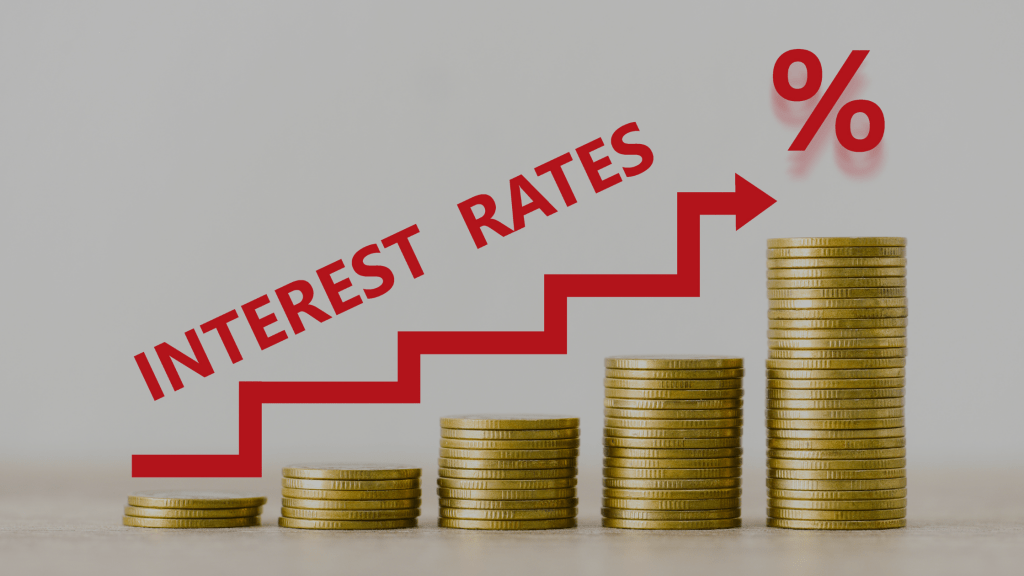First-Time Home Buyer’s Comprehensive Guide to Australian Market

The Ultimate Guide for First-Time Home Buyers in the Australian Market For 2025 Buying a house is a significant milestone. For first-time home buyers in Australia, it can be both exciting and daunting. The Australian housing market is complex. It’s essential to understand its intricacies before diving in. This comprehensive guide is designed to help. It will navigate you through the process of buying your first home in Australia. We’ll cover everything from understanding the market to securing finance. We’ll also delve into the legalities and the final steps of settling into your new home. Our aim is to equip you with the knowledge you need. This will ensure you’re well-prepared for your home-buying journey. So, whether you’re just starting to consider buying a house or you’re already on the hunt, this guide is for you. Let’s embark on this exciting journey together. Understanding the Australian Housing Market Australia’s housing market is dynamic and diverse. It’s influenced by economic conditions, population growth, and government policies. For first home buyers, staying informed about market trends is crucial. Trends influence property values and your purchasing power. It’s important to recognize that property prices can vary significantly. Factors like location, proximity to amenities, and local infrastructure all play a role. Here’s a list of key aspects to consider: Market Trends: Keep an eye on price fluctuations and buyer demand. Location: Desirable locations often command higher prices. Property Type: Know whether you prefer a house, apartment, or unit. Understanding these elements will help you make informed decisions. Research and analysis are your friends when diving into the property market. Engage with property reports and market forecasts regularly. This insight will empower you to predict potential investment returns and property appreciation. Familiarizing yourself with these variables lays a strong foundation for your home-buying journey in Australia. Assessing Your Financial Capacity Before buying a house, understand your financial capacity. This involves calculating your income, expenses, and savings. Determine how much you can comfortably afford for a deposit and ongoing mortgage repayments. Consider all sources of income, including salary, investments, and any other earnings. Having a clear picture of your financial situation helps set realistic home-buying goals. It’s essential to account for lifestyle expenses alongside potential mortgage payments. Don’t forget to factor in additional costs. These may include stamp duty, legal fees, and property maintenance. A comprehensive financial assessment ensures you are prepared for any financial commitments. Taking the time to assess your financial capacity will prevent future stress. It also increases your chances of obtaining a home loan. Knowing your limits is key to a successful home-buying experience in Australia. The Importance of Budgeting Budgeting is a critical step for every first home buyer. Begin by tracking your income and expenses over several months. This provides a solid understanding of your cash flow. By creating a detailed budget, you can identify areas to cut back on. Allocate extra funds towards your home deposit. This discipline helps build financial confidence. An effective budget lays the foundation for future financial health. It can also support saving goals and safeguard against unexpected expenses. This ensures you’re well-prepared for purchasing a home. Improving Your Credit Score A good credit score is vital when applying for a home loan. It influences the terms of your mortgage and your interest rates. Begin by checking your credit report for any errors. Pay off outstanding debts and maintain a consistent payment history. These actions will gradually enhance your credit score. Credit improvement often requires patience and persistence. It’s important to keep credit inquiries to a minimum. Excessive inquiries can negatively impact your score. Staying mindful of these factors will benefit your home-buying journey in the long term. First Home Owner Grant and Other Incentives Australia offers various incentives to encourage first-time home buyers. The First Home Owner Grant (FHOG) is a popular initiative. This grant helps reduce the financial burden of buying a house. The FHOG provides a one-time payment to eligible first home buyers. The grant amount and eligibility criteria vary by state or territory. It’s essential to research specific details based on your location. Other financial incentives can complement the FHOG. These include the First Home Loan Deposit Scheme and stamp duty concessions. Each incentive aims to make home ownership more accessible. Here’s a quick list of common incentives for first home buyers: First Home Owner Grant (FHOG) First Home Loan Deposit Scheme Stamp duty concessions HomeBuilder grant (varies by state) These incentives can significantly impact your budget. Understanding them helps you capitalize on potential savings. Engaging a financial advisor can further clarify which incentives suit your needs. State-Specific Grants and Concessions Each Australian state offers unique grants for first-time buyers. These grants can enhance the benefits of the FHOG. Research is key to understanding what’s available in your state. For instance, some regions provide additional grants for purchasing new properties. Meanwhile, others offer specific concessions on properties in regional areas. These localized incentives can reduce your initial expenses. Eligibility criteria can vary. Common factors include the type of property, its value, and your residency status. Checking these requirements ensures you apply for all applicable grants. Exploring state-specific opportunities can yield considerable savings. Familiarize yourself with local regulations and policies. This knowledge is invaluable in your home-buying journey. Financing Your Home Purchase Securing the right financing is a critical step in buying a house. Understanding your options will help you make informed decisions. Begin by exploring various home loan products available in the market. It’s important to consider both fixed and variable interest rates. A fixed-rate loan offers predictable payments over time, while a variable rate can fluctuate. Weighing the pros and cons of each type can guide your choice. Saving for a deposit is another essential aspect of financing. The higher your deposit, the less you’ll need to borrow. This can also affect your loan interest rate and overall loan terms. Additional costs, such as lender’s mortgage insurance (LMI), may apply if your deposit is below 20%. Factoring in these expenses will ensure
Australian Property Investment Strategies for 2025: A Comprehensive Guide to Maximizing Wealth in a Changing Market

Australian Property Investment Strategies 2025: Maximise Wealth in a Changing Market The Australian property market is a dynamic landscape of opportunity and challenge! Did you know that property investment has consistently been one of the most reliable wealth-building strategies in Australia? In 2025, the market is evolving faster than ever, with technological innovations, demographic shifts, and economic changes creating unprecedented opportunities for savvy investors. The 2025 Australian Property Market Landscape The Australian property market is poised for another dynamic year in 2025. With evolving trends, shifting economic indicators, and technological advancements, property investment opportunities abound. Let’s explore the major themes and strategies shaping the landscape and how investors can navigate this complex market effectively. Current Market Trends Rising Property Prices: Key metropolitan areas continue to experience a surge in property values, driven by demand outstripping supply. This trend highlights a potential for capital growth in urban hubs. Rental Market Tightness: Vacancy rates remain low, pushing rental yields higher, especially in key suburban areas. Increased Demand for Regional Properties: Australians are embracing work-from-home lifestyles, making regional areas more attractive. Impact of Interest Rates: Stable interest rates create a more predictable environment for investors, encouraging long-term commitments. Economic Indicators Affecting Property Investment GDP Growth: Steady economic recovery post-pandemic provides a stable foundation for property investment. Employment Rates: Improved employment rates correlate with increased housing demand. Inflation Trends: Controlled inflation ensures that property values remain a reliable hedge against economic fluctuations. Population Growth: Australia’s migration policies contribute to population growth, fueling demand for housing. Regional Market Variations Metropolitan vs. Regional: While Sydney and Melbourne remain investment favorites, regional areas like Ballarat and the Sunshine Coast are emerging as hotspots. State-Specific Trends: Western Australia’s mining resurgence drives property demand, whereas Queensland benefits from interstate migration. Impact of Post-Pandemic Economic Recovery Shift in Preferences: Demand for larger homes with space for home offices and outdoor areas has spiked. Increased Construction Activity: Government stimulus programs support new housing developments, creating fresh opportunities for investors. Emerging Property Investment Strategies Technology-Driven Investment Approaches AI Tools: Leverage AI for predictive analytics, ensuring smarter property selection. Blockchain Technology: Secure and transparent transactions increase investor confidence. Sustainable and Eco-Friendly Property Investments Green Building Initiatives: Energy-efficient homes gain traction, with increased demand for solar-powered properties. Sustainable Materials: Builders shift to sustainable materials, enhancing long-term value. Diversification Techniques Asset Classes: Investors are diversifying into commercial, residential, and industrial properties to balance risks. Geographical Spread: Spreading investments across multiple states mitigates local market risks. Alternative Property Investment Models Co-Investment: Investors pool resources for higher-value properties. Fractional Ownership: Technology enables smaller investors to own a share of high-value properties. Regional Investment Opportunities Top-Performing Property Markets Melbourne and Sydney: Continued high demand in established areas. Brisbane: A rising star thanks to major infrastructure developments and the 2032 Olympics. Emerging Suburban and Regional Investment Hotspots Geelong and Bendigo: High growth rates fueled by population spillover from Melbourne. Toowoomba: Infrastructure upgrades make this a sought-after destination for investors. Infrastructure Development Impact Roads and Rail: Projects like Inland Rail open up access to new investment corridors. Urban Development Plans: New housing estates around infrastructure hubs offer lucrative opportunities. Growth Corridor Identification Northern Melbourne: Emerging as a development hub with affordable options. Western Sydney: Benefiting from major airport and transport projects. Financial Strategies for Property Investment Financing Options in 2025 Fixed-Rate Loans: Popular for stability amidst uncertain market conditions. Low-Deposit Schemes: Government-backed initiatives make entry easier for first-time investors. Investment Property Loan Structures Interest-Only Loans: Allow investors to maximize cash flow in the short term. Split Loans: Combining fixed and variable rates offers flexibility. Tax Optimization Strategies Negative Gearing: Remains a key strategy for offsetting taxable income. Depreciation Benefits: Claiming on wear and tear boosts cash flow. Risk Management Techniques Insurance: Comprehensive property insurance protects against unforeseen events. Portfolio Diversification: Reduces risk exposure across various asset classes. Technology and Property Investment AI-Powered Investment Analysis Tools Data Insights: AI tools identify undervalued properties and predict market trends. Portfolio Management: Automation simplifies tracking and adjusting investment strategies. Virtual Property Assessment Technologies 3D Tours: Help investors evaluate properties remotely, saving time and costs. Augmented Reality: Visualize potential property modifications before purchase. Blockchain in Real Estate Transactions Smart Contracts: Ensure transparency and efficiency in transactions. Secure Ownership Records: Blockchain eliminates disputes over ownership. Data-Driven Investment Decision Making Big Data Analytics: Provides insights into buyer behaviors and market patterns. Predictive Modeling: Helps investors anticipate future trends for strategic planning. Sustainable and Future-Proof Investments Green Property Developments Solar-Powered Communities: Entire neighborhoods focused on sustainability. Recycled Materials: Increase in use to minimize environmental impact. Energy-Efficient Investments Smart Homes: IoT integration enhances energy efficiency and attracts tenants. Government Incentives: Rebates for energy-efficient installations make them cost-effective. Climate-Resilient Property Selection Flood-Proofing: Properties designed to withstand climate risks gain prominence. Temperature Regulation: Buildings with passive design principles reduce energy costs. Long-Term Value Preservation Strategies Maintenance Plans: Regular updates to keep properties competitive. Location Selection: Choosing areas with strong long-term demand ensures sustained value. Legal and Regulatory Considerations 2025 Property Investment Regulations Zoning Laws: Changes in zoning laws could open up new development opportunities. Tenancy Regulations: Evolving rules around tenant rights impact rental property management. Tax Implications Capital Gains Tax: Planning sales timing to minimize tax burdens. Stamp Duty Concessions: Leveraging state-specific benefits to lower upfront costs. Foreign Investment Guidelines FIRB Approvals: Staying compliant with regulations governing foreign ownership. Quota Systems: Restrictions on foreign purchases in certain areas impact strategy. Compliance and Risk Mitigation Legal Advisors: Engaging professionals to navigate complex regulations. Due Diligence: Comprehensive property checks to avoid costly surprises. The Australian property market in 2025 offers a wealth of opportunities for investors willing to stay informed and adaptable. By leveraging the latest strategies, understanding emerging trends, and adhering to regulations, investors can secure sustainable growth and long-term success. Visit Simply Wealth Group for more assistance. Also Visit Simply Invest Group for Financial Advices.
Comprehensive Guide to Residential Property Investment in Australia: Strategic Wealth Creation Strategies for 2025

Ultimate Guide to Residential Property Investment in Australia: Wealth Building Strategies for 2025 The Australian property market continues to be a pivotal avenue for wealth creation in 2025, with strategic investors leveraging sophisticated approaches to build financial resilience. Recent market analysis reveals that property investment remains a critical component of comprehensive wealth management strategies, with approximately 2.3 million Australians holding investment properties. The 2025 property investment landscape presents unique opportunities and challenges, requiring investors to adopt a more nuanced and strategic approach. Economic shifts, technological advancements, and evolving demographic trends are reshaping traditional investment methodologies. 2025 Australian Property Market Landscape When I first started trying to wrap my head around the Australian property market, I felt like I was staring at a jigsaw puzzle with half the pieces missing. There’s just so much going on: economic changes, tech advancements, shifting demographics—you name it. But here’s the thing, once you dive into it, patterns start emerging, and it’s fascinating to see how all these factors connect. Let’s unpack what the 2025 market might look like, shall we? Comprehensive Market Trend Analysis The Australian property market in 2025 is shaping up to be dynamic, to say the least. One trend I’ve noticed—based on both my research and talking to industry insiders—is the rise of regional markets. Cities like Geelong and Ballarat in Victoria, or Sunshine Coast in Queensland, are no longer just sleepy towns. They’re turning into property hotspots because people want space, affordability, and a lifestyle that the big cities can’t always offer. On the other hand, urban hubs like Melbourne and Sydney? They’re bouncing back, but in a different way. Investors are looking at apartments closer to the CBD again, especially as migration picks up. Pro tip: keep an eye on Australia’s top suburbs with infrastructure upgrades. Trust me, if a new train line or school is announced, that area’s property prices will climb faster than you can say “auction clearance rate.” Impact of Economic Recovery Post-Pandemic Let’s talk about the elephant in the room: the pandemic hangover. Australia’s economy is rebounding, but it’s not without its hiccups. One surprising upside has been government incentives—like first-home buyer schemes—which are giving younger Australians a shot at the market. That said, interest rates are still a bit of a wild card. In 2025, we’re likely to see a stabilization, but the rollercoaster of the past few years has left some people spooked. If I’ve learned anything, it’s this: timing the market is a mug’s game. Instead, focus on value. Is the property solid? Is it in a growth area? Those questions matter way more than trying to predict the next rate cut. Technological Disruption in Real Estate Oh boy, the tech revolution in real estate is something else! I recently tried a virtual property tour, and honestly, it blew my mind. Gone are the days of driving around for hours to see a house only to realize it’s not your vibe. Now, buyers can tour properties from their couch, which means sellers need to up their game with staging and professional photography. Another game-changer? AI-powered property valuation tools. I remember getting a valuation done last year, and it felt so… precise. These tools factor in way more data than any human could, like nearby schools, crime rates, and even environmental risks. If you’re thinking of investing, these technologies can give you a competitive edge by highlighting under-the-radar suburbs. Demographic Shifts Influencing Property Demand Have you noticed how much demographics are shifting? Millennials are finally stepping into the market as first-home buyers, and they’re prioritizing lifestyle over square footage. Coastal living, walkability, and energy-efficient homes are all high on their list. Meanwhile, downsizing baby boomers are creating a ripple effect—selling larger family homes in the suburbs and snapping up luxury townhouses or apartments. Migration is another key driver. With Australia opening its doors to skilled migrants again, areas with strong job markets are set to boom. Think western Sydney, parts of Brisbane, and regional hubs that cater to specific industries like tech or healthcare. Emerging Investment Corridors and Growth Regions If you’re looking for the next big thing in property, it’s all about those emerging corridors. Western Melbourne, for example, is brimming with potential. I’ve seen developers flocking to places like Werribee and Tarneit, and for good reason—affordable land, proximity to the city, and major transport upgrades make these areas prime for growth. Another hotspot? South-East Queensland. The 2032 Olympics in Brisbane is already driving infrastructure projects, and the ripple effect is boosting nearby areas like Logan and Ipswich. Investors who got in early are probably grinning ear to ear right now. Here’s a tip I learned the hard way: don’t just look at where people are moving now—look at where they will move in five years. Check for planned schools, hospitals, and commercial developments. It’s like having a crystal ball, but way more reliable. In short, 2025 is looking like a year of opportunities and challenges for the Australian property market. Whether you’re buying your first home, upgrading, or investing, the key is to stay informed and flexible. Trust me, the more you understand the landscape, the easier it gets to navigate—even if it feels overwhelming at first. And hey, if you find a gem in an emerging suburb, you might just thank your future self! Advanced Property Investment Strategies When I first started exploring advanced property investment strategies, I thought I had it all figured out. Buy low, sell high—easy, right? Spoiler alert: it’s not. The deeper I dove, the more I realized just how intricate and dynamic this world is. From crafting a diversified portfolio to leveraging cutting-edge technology, there’s so much to unpack. Here are some strategies I’ve learned along the way—sometimes the hard way—that can take your property investments to the next level. Sophisticated Portfolio Development Techniques Building a property portfolio isn’t just about owning multiple properties; it’s about balance. I’ve learned that a well-rounded portfolio combines high-growth properties with steady cash-flow investments. For example, I once
Why Pre-Approval is a Must-Have for 2025 Property Investors

The Importance of Pre-Approval for 2025 Property Investors In the world of property investment, preparation is key. One crucial step in this preparation is securing pre-approval for a mortgage. Pre-approval is not just a formality. It’s a strategic move that can give property investors a significant advantage. In the competitive landscape of the 2025 property market, pre-approval could be the difference between securing a deal or missing out. It provides a clear financial roadmap, helping investors make informed decisions. This guide will delve into the importance of pre-approval for property investors. It will shed light on the process, benefits, and strategies to secure the best investment property financing. Whether you’re a seasoned investor or a newcomer to the property market, understanding the role of pre-approval is crucial. Join us as we explore the world of mortgage pre-approval and its impact on your property investment journey in 2025. Understanding Pre-Approval in Property Investment Mortgage pre-approval is a lender’s conditional nod to provide a loan up to a specific amount. It shows sellers you’re a serious contender and financially ready. Knowing your borrowing capacity makes investment decisions clearer. Many confuse pre-approval with pre-qualification. However, pre-qualification is only an estimate based on self-reported financials. Pre-approval requires a thorough review of your financial history, providing a more definitive borrowing figure. To gain pre-approval, lenders consider several criteria. They closely examine credit scores to gauge reliability. A strong credit score increases chances for a favorable pre-approval. Additionally, your debt-to-income ratio is vital. Lenders want assurance that you can comfortably manage new mortgage payments alongside existing obligations. Documentation like pay stubs, tax returns, and bank statements are typically required. These documents provide a detailed picture of your financial health. By understanding pre-approval, investors can better prepare for their property endeavors. Meeting lender criteria ensures a smoother path toward securing necessary financing. The Strategic Advantages of Pre-Approval for 2025 Market Conditions In the fast-paced property market of 2025, pre-approval offers investors a competitive edge. Having pre-approval positions you as a serious buyer, which appeals to sellers. It can even tip bidding wars in your favor. Beyond positioning, there are tangible financial benefits linked with pre-approval. It helps you negotiate better prices or terms, such as lower interest rates. Sellers may be more inclined to offer incentives to pre-approved buyers. The economic forecasts for 2025 highlight fluctuations, which influence property prices and interest rates. Pre-approval can protect you from sudden market spikes. Locking in an interest rate ahead of time shields you from future increases. Pre-approval also facilitates a quicker purchasing process. It streamlines negotiations and enables faster decision-making. Thus, pre-approved buyers can act swiftly in securing desired properties. With these strategic advantages, property investors can navigate the 2025 market more effectively. Staying informed about economic trends and maintaining pre-approval validity are key tactics. This preparedness helps maximize opportunities in a dynamic investment landscape. Navigating the Pre-Approval Process: A Step-by-Step Guide Pre-approval starts with gathering essential documents and financial details. It’s crucial to provide lenders with an accurate snapshot of your financial health. Required documentation often includes proof of income, tax returns, credit history, and existing debt information. Different lenders have varying criteria for granting pre-approval. Understanding these lender-specific criteria can streamline your approach. Lenders will assess credit scores, debt-to-income ratio, and your employment stability. Familiarize yourself with these requirements before applying. To ensure a successful pre-approval application, preparation is key. Here are some helpful tips: Check Credit Scores: Verify your credit report for accuracy and address any issues. Organize Financial Records: Keep employment history, income statements, and tax returns easily accessible. Calculate Debt-to-Income Ratio: This ratio helps determine how much you can borrow. Communicate clearly and honestly with your lender throughout the process. Transparency about your financial situation reduces the chances of surprises. Ensure all information on your application is accurate and complete. Staying organized and responsive can improve your chances of securing pre-approval. Respond promptly to any queries or requests from your lender. This proactive approach shows lenders you’re serious about securing an investment property. Navigating the pre-approval process might seem daunting, but it’s manageable with the right preparation. Utilize available resources and consider consulting a mortgage broker. Their expertise and knowledge can guide you through complex aspects and improve your application outcome. Financial Considerations for Pre-Approval Credit scores and debt-to-income ratios are pivotal in the pre-approval process. Lenders use these metrics to assess your financial reliability. A higher credit score often results in better loan terms and interest rates. Maintaining financial stability is essential when seeking pre-approval. Investors should manage existing debts and avoid new liabilities. Sound financial planning ensures you can meet lender criteria, increasing your chances of approval. Consider potential tax implications when planning for property investment. Understanding how investment properties can affect your tax status is crucial. Consulting a tax professional can help identify deductions and potential liabilities. Closing costs are another financial aspect to consider. These costs can add up, impacting your overall budget. Be prepared to cover expenses like appraisal fees, title searches, and insurance. Including these costs in your financial plan is prudent. To summarize, here are key financial considerations: Credit Scores: Aim for a strong credit profile. Debt Management: Keep debt-to-income ratios in check. Tax Planning: Seek guidance for potential deductions and liabilities. Budget for Closing Costs: Include these in your investment plan. An informed financial approach can significantly enhance your pre-approval success. Taking steps to improve credit and manage finances can lead to favorable lending terms. This forward-thinking strategy will assist in navigating the property market confidently in 2025. Leveraging Pre-Approval in Investment Property Financing Pre-approval can greatly influence the terms of your investment property financing. With pre-approval, you often gain access to better interest rates. This advantage is beneficial when securing favorable investment property loans. Shopping around for the right loan is crucial. Different lenders offer varying rates and terms. It’s vital to compare these aspects to maximize your investment potential. By doing so, you ensure that you choose the loan that best aligns with your financial strategy. Mortgage brokers play a
How interest rates in Australia are playing hardball with your property investment plans

How Interest Rates in Australia Impact Your Property Investments Interest rates play a significant role in shaping the property investment landscape in Australia. As an investor, understanding how these rates influence your decisions and potential returns is crucial for long-term success. The interaction between interest rates and property investment in Australia has a history marked by significant shifts that investors must navigate effectively. How Interest Rates Impact Property Affordability Interest rates directly affect the cost of borrowing. When rates rise, monthly mortgage repayments increase, potentially decreasing the affordability of new property purchases. For example, a rise in the cash rate by just 1% can add hundreds of dollars per month to mortgage payments, making it essential for investors to plan their finances carefully. This can lead to a cooling effect on property demand, which may stabilize or lower property prices as potential buyers hesitate to enter the market. Conversely, lower interest rates make borrowing cheaper, encouraging more buyers and investors to finance property acquisitions. This increase in demand can push property prices higher, as competition intensifies among buyers. For property investors in Australia, understanding and anticipating these shifts can inform better strategies for purchasing and cash flow management. It is important to keep an eye on announcements from the Reserve Bank of Australia (RBA) to anticipate when changes in interest rates might occur. Property Value Trends and Interest Rate Shifts The property market in Australia often reacts swiftly to changes in interest rates. When rates are high, buyer competition tends to reduce, leading to potential stagnation or decline in property values. This trend can create opportunities for well-capitalized investors to acquire properties at lower prices. For instance, between 2010 and 2012, high interest rates contributed to slower growth in property prices. On the flip side, when the RBA reduces interest rates, property prices often experience upward pressure. Lower rates mean lower mortgage payments, making homes more affordable and attractive. For example, during periods like 2020-2021, historically low interest rates spurred a boom in property prices across Australia, as many buyers and investors took advantage of favorable borrowing conditions. Recognizing this cyclical relationship helps investors time their market entry and exit points for maximum profitability. Understanding historical trends in interest rates can be particularly informative. Over the past two decades, Australia has witnessed fluctuations that significantly impacted property values. This historical perspective enables investors to draw parallels and plan for future changes, enhancing their decision-making capabilities. Strategies for Managing Interest Rate Changes Fixed vs. Variable Loans: One of the most effective ways to manage exposure to changing interest rates is to choose between fixed and variable-rate mortgages. Fixed-rate loans provide certainty by locking in a specific interest rate for a set period, protecting investors from potential rate hikes. This is especially beneficial during periods of predicted rate increases, as it stabilizes mortgage payments. Variable-rate loans, however, may offer lower initial rates but come with the risk of fluctuation. If interest rates fall, variable-rate borrowers benefit from reduced payments, but if rates rise, they face higher costs. Investors need to evaluate their risk tolerance and market outlook when deciding which option aligns with their strategy. Diversification of Investment Portfolio: Diversifying your portfolio by investing in properties across different locations and market segments (e.g., residential, commercial, or industrial) can buffer the impact of changing interest rates. For instance, some areas may be less sensitive to rate changes due to local demand dynamics. This strategy helps spread risk, as the performance of different asset types may not be uniformly impacted by interest rate fluctuations. Building Cash Reserves: Maintaining a healthy cash reserve is crucial for weathering periods of higher interest rates. When rates unexpectedly rise, having an emergency fund can help manage increased mortgage repayments without disrupting investment returns. This financial buffer is a key component of risk management and ensures that property investments remain sustainable during volatile periods. Interest Rate Typical Impact on Property Market Investor Strategy Rising Rates Reduced affordability, slower demand Opt for fixed-rate loans, build reserves Stable Rates Balanced market, steady demand Diversify investments, monitor trends Falling Rates Increased affordability, higher demand Consider variable rates, expand portfolio Preparing for Future Rate Changes The current outlook for interest rates in Australia suggests a cautious approach. While some economic forecasts predict potential rate stabilization, others indicate possible future hikes, especially as inflation and global economic conditions evolve. Property investors can stay updated by following the latest auction results in Melbourne or regularly reviewing interest rate impacts on the property market, helping them adapt to changes in the interest rate landscape. Preparing for these changes may involve refinancing existing loans through Simply Wealth Group to lock in more favorable rates, reassessing the balance between fixed and variable loans, or even exploring alternative investments. An adaptive mindset and proactive strategy will ensure a competitive edge in the Australian property market. In conclusion, navigating the property market amidst fluctuating interest rates requires strategic foresight and flexible planning. By understanding the impact of interest rates on the property market and investment strategies, Australian property investors can ensure sustainable growth and success, regardless of market shifts. Our Blogs Related to Interest Rates:
I Analyzed Land Value Across NSW—Here’s What Every Property Investor Should Know

I Analyzed Land Value Across NSW—Here’s What Every Property Investor Should Know Land value NSW has become the focal point for property investors seeking high returns and future stability. With a dynamic market in New South Wales, understanding what drives land value the difference between a smart investment and a missed opportunity can be. Every investor needs insights into these trends to capitalize on growth hotspots across the state. Location remains a powerful force behind land value in NSW. Coastal cities and rapidly growing suburbs have seen notable jumps in value, while lesser-known regions are now emerging as hidden gems. Identifying these areas early could unlock major gains, helping investors maximize their portfolio’s potential in ways that high-demand city centers might not. Infrastructure is another game-changer in land value NSW. Planned transport links, schools, and business districts have a profound impact on property prices, drawing new interest and driving up land values. By staying informed on these developments, you can position yourself for success, investing in areas poised for long-term growth. But there’s more to it—tax implications in NSW affect how profitable your investment truly is. With land tax obligations varying across property types and locations, knowing the tax landscape can prevent costly surprises. Savvy investors account for these factors, using tax insights to refine their strategies and retain more of their gains. I hope this sparks a new vision for you—imagine looking back, grateful you seized the opportunity in land value NSW today. What Factors Drive Land Value in New South Wales? Land value NSW is a powerful metric that can either elevate or hinder an investment’s potential. Understanding what influences this value is key for investors wanting to make impactful decisions. The landscape of land value in NSW isn’t static; it’s shaped by a dynamic set of factors that reveal which areas may become tomorrow’s high-growth hotspots. Location remains a critical driver of land value in NSW, with properties near thriving urban centers or scenic coastal towns often commanding higher prices. Proximity to amenities, job opportunities, and desirable lifestyles make these areas sought-after, pushing land values upward. For investors, location is often the starting point in assessing a property’s growth potential. But it’s not just location—government and infrastructure projects significantly boost land value NSW. New highways, transport links, and public amenities can transform a quiet suburb into a bustling investment hub almost overnight. As these developments progress, land values follow suit, making these areas ideal targets for early investors aiming to maximize returns. Imagine looking back years from now, realizing that spotting these factors early on was your secret advantage. Recognizing land value drivers is like having a roadmap to navigate the property market’s twists and turns. It’s not about chance; it’s about choosing strategically, backed by insights into growth trends and location dynamics. Economic health, including employment rates and local business growth, also plays a role in driving land value in NSW. Thriving regions attract both residents and investors, sparking competition and steadily increasing land prices. By following these factors, investors can position themselves for growth in areas with sustainable, long-term demand. How Rising Demand and Development Affect Land Prices In the vibrant world of property investment, understanding how rising demand influences land value NSW is crucial. As more people flock to urban centers and suburban areas alike, the competition for land intensifies, driving prices upward. This surge in demand isn’t just a fleeting trend; it’s a fundamental shift that shapes the landscape of real estate investment. Development plays an equally pivotal role in determining land value. New infrastructure projects, such as roads, schools, and public transportation, not only enhance accessibility but also increase the desirability of surrounding areas. As these developments unfold, land prices often soar, presenting golden opportunities for savvy investors who can spot these growth indicators early. The interplay between rising demand and development creates a ripple effect that can elevate land values significantly. Areas once considered remote can suddenly become hotspots for residential and commercial investment. As communities evolve and expand, those who recognize the signs of impending growth can secure their stake in future prosperity. Imagine being part of this transformative journey, where understanding the dynamics of land value can unlock lucrative investment opportunities. By staying attuned to local developments and market trends, investors position themselves at the forefront of this exciting landscape, ready to capitalize on the inevitable rise in land prices. As we witness the dance of demand and development in land value NSW, one thing becomes clear: the future of property investment is bright. Armed with the right knowledge and foresight, investors can navigate these changes with confidence, making informed decisions that pave the way for substantial returns in the ever-evolving real estate market. Tax Implications of NSW Land Ownership – Avoiding Common Pitfalls Owning land in New South Wales is an exciting venture, but it comes with its fair share of tax implications that every investor should understand. Navigating the complexities of land value NSW can be daunting, yet it’s crucial for maximizing your returns. Missteps in tax planning can lead to costly consequences, making knowledge of potential pitfalls essential for every property owner. One of the most significant traps is misunderstanding land tax assessments. Investors often underestimate how quickly land value can increase, leading to unexpected tax liabilities. Being aware of current rates and how they’re calculated helps you prepare and avoid nasty surprises come tax time. Ignorance is not bliss in the world of property taxes, especially in a rapidly changing market. Imagine the relief of having a solid grasp of the tax implications that come with your land ownership! By understanding these nuances, you can navigate the potential pitfalls with confidence and ensure your investment thrives without unnecessary financial setbacks. Knowledge truly is power when it comes to safeguarding your investment in land value. Another common pitfall arises from failing to account for capital gains tax when selling property. Many owners are unaware that a rise in land value upon sale can lead to
Discover the Best Time to Buy Melbourne Real Estate

I would suggest that time in the market, owning a Melbourne residential property and allowing leverage, compounding, and time to work are far more important than trying to perfectly time your purchase. That said, if the market offers you a once-in-a-decade opportunity, it’s wise to seize it. The current conditions in the Melbourne residential property market present a unique chance for strategic, long-term investors to benefit from a contrarian approach. While broader sentiment might lean towards caution, the key to real estate investment in Melbourne 2024 often lies in going against the grain. Here’s why now might just be the best time to buy Melbourne real estate. Current Melbourne Property Market Trends You Need to Know Melbourne’s property market is undergoing significant changes, influenced by various factors. Recent Melbourne property investment trends indicate a steady rise in property values, driven by high demand and limited supply. Urban areas remain highly competitive, with strong demand for both residential and commercial properties. Suburbs and emerging neighborhoods are also experiencing notable growth, making them appealing options for investors. Additionally, interest rates and broader economic conditions play a critical role. As borrowing costs fluctuate, they affect both buyer confidence and investment potential. Understanding what a capitalization rate in real estate is and how it impacts return on investment is crucial during these times. Staying informed on these developments and reviewing documents such as the settlement statement in real estate transactions can help investors make more strategic decisions. Overall, grasping these trends is essential for anyone looking to invest or buy in Melbourne and capitalize on the best opportunities. Benefits of Countercyclical Investment in Melbourne Countercyclical investment involves buying properties during market downturns when prices are lower. In Melbourne, this strategy can lead to significant gains when the market recovers. By focusing on stable or high-potential areas, investors can also reduce exposure to market volatility and achieve more consistent returns. Benefits Of Countercyclical Investments : ● Lower Purchase Prices: Buy properties at reduced rates during downturns. ● Higher Returns: Gain from property value increases when the market recovers. ● Reduced Volatility: Enjoy stable returns by investing in resilient areas. ● Strategic Advantage: Focus on Melbourne neighborhoods with consistent demand Key Insights from Melbourne Real Estate Market Analysis Melbourne’s real estate market shows a strong demand in urban and high-growth areas. Property values are generally rising, but there are fluctuations based on location and property type. Understanding these trends can help investors make informed decisions and capitalize on emerging opportunities. Melbourne Real Estate Market Highlights ● Strong Demand: High interest in both urban and growing suburban areas. ● Rising Values: Overall increase in property prices, with regional variations. ● Investment Opportunities: Emerging hotspots and stable neighborhoods. ● Market Fluctuations: Location and property type impact value trends. Top Residential Real Estate Opportunities in Melbourne Melbourne’s residential real estate market offers diverse opportunities, from established suburbs to emerging areas. Key opportunities include properties in high-demand neighborhoods with strong growth potential and new developments in up-and-coming regions. Investors should focus on areas with robust infrastructure, proximity to amenities, and planned future developments. Prime Residential Investment Opportunities in Melbourne ● High-Demand Neighborhoods: Invest in established areas with strong market interest. ● Emerging Regions: Explore new developments in up-and-coming suburbs. ● Growth Potential: Target locations with expected appreciation and infrastructure improvements. ● Amenities Proximity: Look for properties near essential services and transport links. The Opportunity at Hand Investing in Melbourne’s real estate market offers substantial opportunities, particularly for those who take a strategic, long-term approach. By staying informed about current trends and using countercyclical investment strategies, investors can benefit from lower purchase prices and capitalize on future market recovery. As property values continue to rise in both established and emerging neighborhoods, now is an ideal time for buying property in Melbourne. Additionally, the demand for rental properties in Melbourne is growing, providing investors with more options to secure potential long-term growth in the city’s residential market.
Understand the Interest Rate Impact on the Economy Today

The interest rate on mortgage loans plays a crucial role in determining housing affordability. As rates rise or fall, they directly impact the monthly payments of homebuyers and property investors. Understanding these fluctuations is essential for anyone entering the real estate market today. Looking back at prime interest rate history, we see how financial institutions adjust their lending standards based on the economy’s health. These historical trends provide valuable insights for predicting future movements and how they will affect borrowing costs, from home loans to business loans. As Mtg interest rates continue to influence the housing market, prospective homeowners face challenges in securing affordable financing. These rates affect the overall cost of a mortgage, determining whether buying property remains a viable option for most people or becomes increasingly out of reach. In the Australian context, land loan interest rates Australia are another critical factor for those looking to invest in land. Whether for residential or commercial development, understanding how these rates are set can help in making sound investment decisions that align with financial goals. Monitoring the annual effective interest rate is also essential for any borrower. This rate provides a true representation of what you’re paying on loans after compounding, ensuring you stay informed and make the best financial choices. Exploring the Surge in Australia’s Mortgage Rates: A Look at the Recent Interest Rate Increase The impact of interest rates on the economy has been significant, especially with the current surge in Australia’s mortgage rates. This shift is shaping various sectors, influencing everything from housing to consumer confidence. As interest rates and consumer spending in Australia adjust to these changes, many are reconsidering their financial decisions. Higher borrowing costs are leading to a slowdown in major purchases, particularly in the housing market. Some experts are even raising concerns about a potential interest rates economy crash, as rising rates put pressure on businesses and households alike. The strain is evident in the increasing difficulty people face in managing their finances. The overall interest rate impact on the economy extends far beyond housing. It touches every aspect of financial life, from savings to investments, and is causing ripple effects across industries. Understanding the high interest rates effects is essential to grasping the future trajectory of Australia’s economy. As rates continue to rise, their long-term consequences will become clearer in the coming months. How Rising Rates are Shaping Australia’s Investment Landscape: The Impact of Interest Rates on Investors The rise in Australian Reserve Bank rates is having a significant impact on the investment landscape, particularly in how it shapes investor behavior. The business impact of higher interest rates is becoming increasingly apparent, as companies face higher borrowing costs and reduced profit margins. This shift is also leading to widespread discussions about the high interest rates effects on various sectors, especially housing and small businesses. With the looming possibility of an economic crisis in Australia, many investors are exercising caution. The impact of interest rate hikes on small businesses has been especially challenging, as these companies often struggle to absorb the rising costs. Additionally, concerns over a potential Australian housing bubble are making property investors wary of making new investments, as high rates drive up mortgage payments and slow down the housing market. Investor Loans and the Impact of Bank Lending Rates in Australia The landscape for investor loans in Australia has been shifting due to changes in Australian Reserve Bank rates. These rates significantly influence borrowing costs, particularly in the property sector where mortgage rates in Australia are rising. Investors are closely watching how these changes align with broader Australian economic policy, as these policies determine how much capital is available for real estate and business investments. Key factors affecting investor loans include: ● The interest rates vs inflation dynamic, which impacts the cost of borrowing. ● The inflation and interest rate relationship, affecting loan affordability. ● Interest rates and consumer spending in Australia, which influence market demand and investment opportunities. As these factors come into play, investors need to carefully consider their strategies. With higher rates and inflation pressure, aligning investments with the evolving economic environment is crucial. Understanding how these shifts affect lending and spending will help investors navigate the current financial climate. Navigating Interest Rates vs Inflation: How Mortgage Rates in Australia Reflect the Economic Crisis The rising mortgage rates in Australia are a clear reflection of the ongoing financial pressures in the economy. As the country faces the possibility of an Australian recession, the increased cost of borrowing is slowing down the housing market and putting additional strain on homebuyers. This shift is contributing to fears of an Australian housing bubble, where inflated property prices may soon come crashing down due to unsustainable lending practices. The broader economic downturn in Australia is also being driven by tighter monetary policies and an uncertain global outlook. With a potential Australia GDP decline on the horizon, investors and policymakers alike are paying close attention to bank lending rates in Australia, which continue to rise in response to the economic challenges. The impact of these rates is being felt across all sectors, from property to business investments. Additionally, concerns about an Australian stock market crash in 2024 are growing as interest rates climb and confidence wanes. How Australian economic policy responds in the coming months will play a crucial role in determining whether the economy can stabilize or whether deeper issues, like inflated mortgage rates, will push the country further into financial trouble. Conclusion: Understanding the Impact of Fed Interest Rate Hikes and Historical Mortgage Trends In light of recent financial developments, examining the 30-year interest rates chart provides valuable insights into long-term borrowing trends. As we anticipate whether the Fed will raise interest rates in November, it’s crucial to consider how such changes will influence global markets and local economies. The effective interest rate formula helps in understanding the true cost of borrowing and its implications on investments. In Australia, the Australia GDP decline and shifts in Australian economic policy
Houses for Rent vs. Apartments: Discover Which Rental Option Brings Higher Returns

Houses for Rent: The Ideal Option for High Rental Returns? For investors seeking reliable income and steady growth, houses for rent are emerging as a premier option, offering more than just monthly cash flow. Unlike apartments, houses bring versatility and space that attract a wider range of tenants, from families to young professionals seeking more than standard apartment living. With the increasing demand for private rentals in suburban and urban neighborhoods, houses have become especially attractive for investors who want to maximize returns while enjoying more leasing stability and tenant loyalty. A unique advantage of investing in houses for rent is the flexibility in pricing, which caters to diverse rental demands, particularly in highly sought-after areas like rent Melbourne. With rental demand surging, investors find that houses offer a greater potential for rental increases, while also allowing more flexibility in terms of short-term leases or pet-friendly accommodations. This variety appeals to a broader tenant pool, enhancing an investor’s ability to maintain full occupancy and enjoy consistent income streams. Finally, houses provide ample space that tenants truly value, especially in competitive markets like Melbourne. The desire for private yards, multiple bedrooms, and home office spaces has made houses a sought-after choice for long-term renters. For investors, this means fewer vacancies, higher tenant satisfaction, and ultimately, greater returns over time. With houses for rent continuing to rise in demand, this rental option is ideal for those looking to achieve both financial growth and stability in today’s rental market. Comparing Rental Returns: Houses vs. Apartments for Investors When it comes to maximizing rental returns, investors often face the dilemma of choosing between houses for rent and apartments. Houses generally offer larger spaces and unique amenities, attracting families and long-term renters who value the comfort and privacy that apartments may lack. In bustling markets like rent Melbourne, houses often command higher rental rates due to their greater appeal, while apartments, though popular, may yield smaller returns due to their limited space and more transient tenant base. Apartments, however, can still be a profitable option, particularly for short-term stays and private rentals that attract young professionals and students. Investors choosing apartments often benefit from lower initial costs, making them more accessible for beginners or those looking for steady, yet modest rental yields. But when compared to houses for rent, apartments may lack the higher flexibility in rental pricing and tenant demographics, which can affect long-term rental returns and the growth potential of the investment. For those prioritizing rental returns and stable income, houses provide a competitive edge. Houses for rent not only offer the opportunity to attract tenants willing to pay a premium for extra space and privacy, but they also give investors the flexibility to adapt to market changes in Melbourne. With an increasing demand for private rentals that allow for family living, pet-friendly accommodations, and home offices, houses can offer robust rental returns that grow with changing tenant needs. This makes houses an excellent choice for investors focused on both current income and future asset appreciation. Private Rentals: A Top Choice for Renters and Investors Alike The appeal of private rentals is booming, capturing the attention of both renters and investors who crave flexibility, privacy, and personalized spaces. For renters, especially those searching for houses for rent rather than apartments, private rentals provide the freedom to live in homes that meet their unique needs. This option allows tenants to enjoy larger spaces, private yards, and the sense of comfort that only a private residence can bring. In rent Melbourne areas, where lifestyle needs vary widely, private rentals cater to families, professionals, and even students seeking a personalized touch in their living arrangements. Investors, too, find private rentals to be an outstanding asset, with the potential for high returns and more stable tenant relationships. The houses for rent market within private rentals has seen an upward trend, offering investors a way to attract long-term tenants who value spacious layouts and extra amenities. Unlike traditional rentals, which may see higher tenant turnover, private rentals provide a more intimate, home-like environment that keeps tenants happy and encourages longer leases. This stability is especially beneficial in markets like Melbourne, where demand for well-kept and conveniently located rental properties remains strong. In the competitive rent Melbourne market, private rentals give investors the flexibility to set premium rates, especially for in-demand properties like houses for rent in desirable neighborhoods. With options to customize leasing terms, adjust rents based on market demand, and offer specialized amenities, private rentals open doors to a wide range of profitable opportunities. Both renters and investors benefit from this approach, making private rentals an ideal choice for those looking to make the most of Melbourne’s dynamic rental market. Exploring Affordable Housing and Student Accommodation Options in Melbourne As Melbourne continues to grow as a cultural and educational hub, the demand for affordable housing and student accommodation Melbourne options is skyrocketing. For students and young professionals, finding budget-friendly living arrangements is key to enjoying the city’s offerings without breaking the bank. Options like houses for rent provide ample space for those looking to share a home with friends or roommates, creating an ideal solution for affordable, communal living. With an increasing range of budget-conscious rentals, Melbourne is attracting renters looking for value in every corner of the city. Affordable housing isn’t just about lower prices; it’s about providing quality, accessible spaces that meet a variety of needs. Investors and landlords are now seeing the benefits of offering well-maintained, affordable housing options in high-demand areas across rent Melbourne suburbs. By creating attractive rental opportunities, they’re able to meet a growing demand for quality housing while ensuring consistent occupancy. This trend also allows investors to support the community, making Melbourne’s rental market more inclusive and vibrant for all. For international students and young adults, student accommodation Melbourne has become an essential part of the city’s housing landscape. With close proximity to universities and public transportation, these housing options are perfect for those who want both convenience and
Is It the Right Time to Buy Property in 2024? Top Insights You Can’t Afford to Miss

Is It the Right Time to Buy Property in 2024? The Australian property market is evolving rapidly, and many potential buyers are wondering, “is it the right time to buy property?” With changing economic conditions, fluctuating interest rates, and the demand for housing still strong, making an informed decision is critical. Whether you are an experienced investor or a first-time homebuyer, understanding market trends will allow you to capitalize on the opportunities 2024 presents. This year, interest rates are one of the key factors impacting property prices, and knowing how to navigate them can mean the difference between a smart investment and a costly mistake. When considering is it the right time to buy property, potential buyers must also take a close look at current auction trends, housing supply, and government policies. In 2024, low housing inventory in key areas like Melbourne and Sydney is driving up competition at auctions, leading to price surges in certain suburbs. However, this doesn’t mean all areas are out of reach—by monitoring regions with less demand and capitalizing on long-term growth opportunities, you could still secure a fantastic investment property. Ultimately, the question of is it the right time to buy property comes down to your financial position, goals, and market knowledge. While some are holding off in hopes that property prices will cool, others are leveraging current interest rates to lock in favorable home loan terms. If you’re looking for long-term gains, focusing on emerging suburbs with solid growth potential may provide the best returns over time. So, understanding where and how to buy in 2024 will empower you to make confident and well-timed investment choices. Is It the Right Time to Buy Property in Australia? Factors You Need to Consider When asking, “is it right time to buy property?” in Australia, there are several key factors to evaluate before making any investment. The property market is influenced by numerous variables, such as interest rates, market demand, and economic stability. In 2024, rising interest rates and a competitive housing market have left many potential buyers wondering if it’s worth waiting for conditions to improve. However, the timing of your purchase depends on how well these factors align with your personal financial goals and the type of property you’re looking for. One important consideration is how is it right time to buy property based on regional performance. Cities like Melbourne and Sydney continue to experience strong demand, pushing property prices higher, while more affordable regions in other parts of Australia may present better investment opportunities. Additionally, government incentives for first-time homebuyers or property investors might make it an attractive time for certain demographics to enter the market, despite economic uncertainty. Another major factor influencing is it right time to buy property is the forecast for future market growth. While interest rates may be higher in the short term, some regions show long-term growth potential that could make buying now a lucrative decision. Understanding the local property market and staying informed about economic trends will help you make a confident decision. Whether you’re investing for rental income or long-term appreciation, evaluating these factors carefully can guide you toward making the right move in Australia’s dynamic property landscape. Interest Rates in Australia: How They Impact Your Property Purchase Decision Understanding interest rates Australia is crucial when deciding whether to purchase property in 2024. With the Reserve Bank of Australia (RBA) adjusting rates to combat inflation, higher interest rates can directly influence borrowing costs for home loans, which in turn affects property affordability. As interest rates rise, monthly mortgage repayments increase, making it more expensive to finance a property. This can discourage some buyers, but for savvy investors, it also presents opportunities to negotiate better deals or take advantage of lower property demand. In 2024, interest rates Australia are expected to continue fluctuating, with potential for further hikes depending on economic conditions. This uncertainty can create a sense of urgency for buyers who want to lock in lower rates before they rise further. However, it’s important to weigh the benefits of securing a property now against the potential for higher repayments over time. Fixed-rate loans may provide stability, while variable-rate loans could see increased costs if interest rates climb. The impact of interest rates Australia doesn’t just affect the immediate affordability of a property—it also influences long-term investment returns. Higher borrowing costs can eat into rental yields and reduce overall profitability for property investors. However, for those planning to hold onto properties for the long term, buying in a rising interest rate environment can still make sense, especially in areas poised for future growth. By staying informed about rate trends and adjusting your financial strategy accordingly, you can make a confident property purchase decision despite market volatility. Home Loan Interest Rates in 2024: What Buyers Need to Know In 2024, home loan interest rates are a critical factor for anyone looking to buy property in Australia. As interest rates continue to rise, they directly influence the cost of borrowing, making it more expensive to finance a home. With variable rates on the rise, buyers are faced with higher monthly repayments, potentially limiting their borrowing power. It’s essential to closely monitor how these home loan interest rates evolve throughout the year to make informed decisions about securing a loan. The key question for buyers is whether to lock in a fixed rate or opt for a variable one. Fixed home loan interest rates provide stability, allowing buyers to plan their finances without the risk of future rate hikes. However, variable rates, though initially lower in some cases, could become more expensive if the Reserve Bank of Australia increases rates again. Buyers need to weigh the pros and cons of both options based on their financial situation and risk tolerance. In addition to the rising cost of borrowing, home loan interest rates also affect long-term affordability and property values. Higher rates tend to cool demand in the property market, as fewer buyers can afford large mortgages, which can

